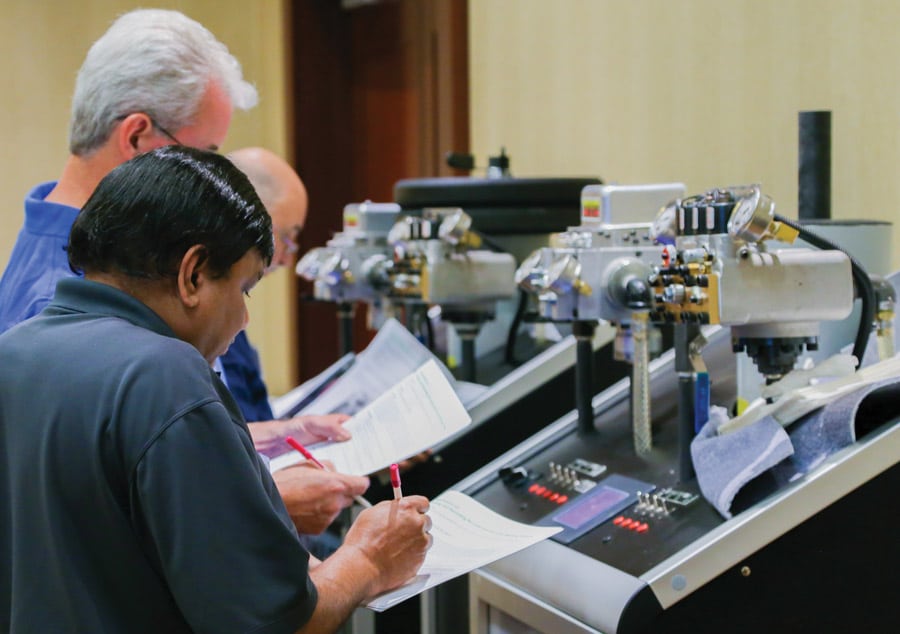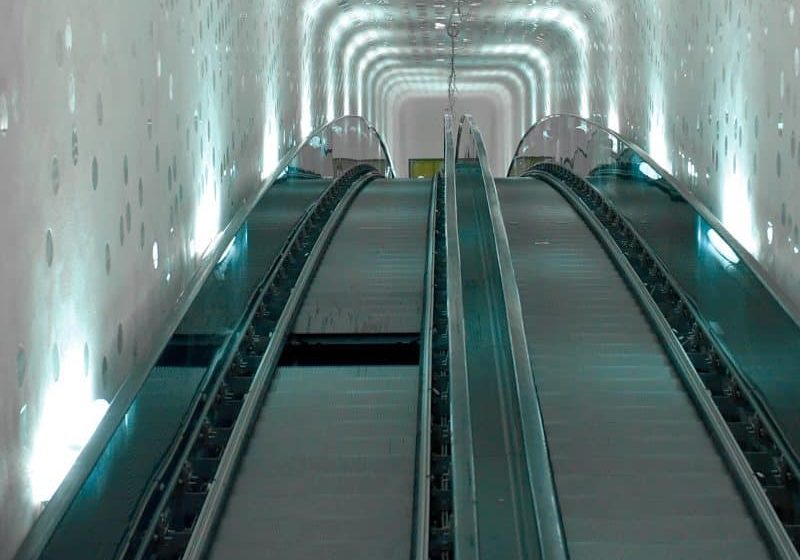What’s Next for NEIEP
Apr 1, 2016

In this Industry Dialogue, John O’Donnell, executive director of the National Elevator Industry Educational Program (NEIEP) talks to EW about the accomplishments and challenges of elevator education in the U.S.

John O’Donnell’s roots in the elevator industry run deep, but he understands that education is vital to keeping on top of an industry that is ever changing. His father and grandfather were both in the trade, and he began in the industry in 1982, performing construction and maintenance for Westinghouse. As a member of the International Union of Elevator Constructors (IUEC) Local No. 4 in Boston, he worked on elevators in the Prudential Tower.
In the mid 1980s, the industry changed with the introduction of solid-state electronic technology, and O’Donnell was determined to change with it. He went back to school and earned a degree in Electrical Engineering from the New England Institute of Technology. He then went to work as a service superintendent and district training coordinator for Schindler. During this time, he earned another degree in Business Management from New England Technical College and took additional classes through Bryant University’s MBA program.
In the early 1990s, O’Donnell started working with NEIEP (established in 1967 by the National Elevator Industry, Inc. and IUEC) as a consultant on lab, text and video development. In 1996, he began overseeing NEIEP’s home-study program as manager of Educational Resources. In this role, he developed new instructor-development and training programs, and contributed to new and revised curricula for NEIEP’s apprenticeship and continuing-education courses. Eventually, he became assistant director and, in 2008, accepted his current position as executive director.
This semester, we’re training more than 1,000 individuals in our New Hire program for probationary apprentices and close to 4,000 more in our standard apprenticeship program. That’s the largest enrollment we’ve had since the start of the recession, and it looks like it’s continuing to climb.
EW: What is the biggest challenge of elevator-industry education today in the U.S., and how is it being addressed?
JO: The elevator industry is so dynamic. In this field, technology is constantly changing, and it’s absolutely necessary for an organization like NEIEP to stay on top of it. This has been the case for some time.
More recently, we’ve faced some new challenges. Because of the student-debt crisis, the federal government has been working to get more young people involved with apprenticeship. We’re excited about the prospect of bringing more young people into the trade, but working with federal agencies often involves regulatory issues that can have an impact on some administrative aspects of our organization.
As a result of this, we’ve been working on the daunting task of updating our pattern standards in each state to conform to the new requirements. Changes to Title 29 of the U.S. Department of Labor Code concerning federal regulations in labor standards for the registration of apprenticeship programs and Title 30, which deals with Equal Employment Opportunity Commission issues, have been at the forefront of this endeavor. So, yes, there are many challenges, but these challenges can also be looked at as opportunities for our organization’s overall improvement and growth.
EW: In which regions is NEIEP training most popular and why? Are there efforts being made to increase interest in areas where interest lags?
JO: The NEIEP curriculum is taught in more than 100 classrooms based in and around our 65 local unions throughout the U.S., including sites in Alaska and Hawaii. For the most part, this involves our four-plus-year apprenticeship program, but we also offer continuing-education courses to IUEC journeymen mechanics throughout their careers.
Because of the recent increase in hiring, our enrollment is up significantly this year. Miami; Seattle; southern California; Las Vegas; Washington, D.C.; San Francisco; Philadelphia; Chicago; and New York have all seen a jump in new hires. This semester, we’re training more than 1,000 individuals in our New Hire program for probationary apprentices and close to 4,000 more in our standard apprenticeship program. That’s the largest enrollment we’ve had since the start of the recession, and it looks like it’s continuing to climb.
One of our most important organizational goals for the coming year is to increase participation for our journeyman mechanics in continuing-education classes. It’s great that we’ve got so many active apprentices, but, especially in a trade like this, it’s so important for learning to continue even after the initial educational requirements have been completed. Technology doesn’t stop changing; it’s so important for mechanics to stay current and up-to-date with what’s new.

EW: How does the apprenticeship program work?
JO: When an individual is hired as an IUEC elevator constructor, he or she begins the NEIEP program by participating in a 12-week computer-based, new-hire course for probationary employees. The course covers the basics of on-the-job safety for the elevator industry, and includes modules on customer relations, diversity, personal-finance management, and the history and benefit structure of the IUEC. Once the six-month probationary period is complete, the employee moves on to the eight-semester apprenticeship program.
The NEIEP apprenticeship program’s eight semesters cover the following:
- Trade Skills
- Hoistway Structures
- Electrical Fundamentals
- Electrical Theory and Application
- Installation
- Solid State
- Power and Logic
- Advanced Topics in Elevators
NEIEP apprentices attend weekly courses on these topics during each 18-week, 72-hr. semester. Our program runs a spring and a fall semester every year, similar to the way most colleges do. Concurrently, apprentices are acquiring on-the-job skills under the supervision of a licensed journeyman.
Today, the NEIEP apprenticeship curriculum is recognized as equivalent to college-level learning by hundreds of colleges and universities, and NEIEP graduates can receive up to 52 college credits for the work completed in the NEIEP classroom.
After completing all eight semesters and logging 8,000 on-the-job experiential learning hours, apprentices become eligible to take NEIEP’s capstone mechanic exam – similar to the bar exam that aspiring lawyers take, only for our industry. An apprentice is considered to have “graduated” from the program when he or she passes the mechanic exam.
EW: How do the continuing-education programs work?
JO: Mechanics from all over the U.S. take advantage of the continuing-education programs offered as part of their benefits package. While we update our apprenticeship curricula as technologies change, our new-course development is primarily focused on continuing education and certifications. We’ve recently added the following:
- OSHA 10 and OSHA 30 Online, which IUEC members can take at their convenience: this is a flexible, self-paced program that can be started and stopped as needed, and gives students the same certification as a classroom-delivered course. A valid Department of Labor OSHA card is mailed to each student upon completion.
- Peelle Freight Door Operator Lab, where students practice working with mechanical and electrical components of the door system and learn ways to safely and efficiently approach freight elevator door work.
- Pipe and Wire Lab, which lets students practice, following a print, to lay out a board, then use a diagram to wire switches with the same materials and procedures they’ll encounter in the field. In this course, they also get hands-on experience bending conduit.
- Interactive, computer-based courses such as the 3D Virtual Escalator: the Virtual Escalator allows our mechanics to see the inner workings of a functioning escalator system. Additional 3D modules on escalator construction, maintenance and troubleshooting are in the works, along with interactive computer-based courses on hydraulic controller systems and code regulations.
- The American Heart Association’s Heartsaver CPR and First Aid course. This course enables our mechanics to respond quickly during a first-aid emergency on the job or at home: one of our publications just profiled a mechanic who saved his daughter’s life using the CPR training he learned in a NEIEP classroom.
NEIEP also supported the development of an American National Standards Institute-accredited certification program, Rigging and Signaling for the Elevator Constructor, where IUEC members can earn a Level 1 or Level 2 certification in rigging and signaling. NEIEP offers online and classroom training in rigging and signaling that students can take to prepare them for the rigorous Certified Signal Person and Rigger Levels 1 and 2 exam. And, NEIEP works with about a dozen states to provide online courses that IUEC members can use to fulfill state licensing continuing-education requirements.

EW: What is new and coming up for NEIEP?
JO: There have been so many changes in the program over the past few years. A new development we’re especially proud of is the expansion of our articulation agreements with colleges and universities. Today, the NEIEP apprenticeship curriculum is recognized as equivalent to college-level learning by hundreds of colleges and universities, and NEIEP graduates can receive up to 52 college credits for the work completed in the NEIEP classroom.
Another area in which we’ve made a lot of progress is in increasing the number of hands-on, practical labs we offer to our students. This is something that will continue as we recognize the tremendous benefit to our students of being able to practice working in the classroom (a safe environment) on equipment they’ll be using in the field. Our hydraulic valve simulator is a great example of that.
We’re currently working on developing a series of practical assessments for our apprenticeship program, where we’ll be testing our apprentices on their ability to apply their knowledge and demonstrate their skills on real equipment. We want to make sure we’re not just teaching them to pass a test, but to perform their work as elevator constructors in the field. This will be a first for education in our trade.
Learn More
For more about the apprenticeship program, such as each semester’s subtopics and course descriptions, go to NEIEP.org and click on the “course information” link. Click on the “College Options for NEIEP Graduates” link to read more about NEIEP’s college partnerships.
Get more of Elevator World. Sign up for our free e-newsletter.







